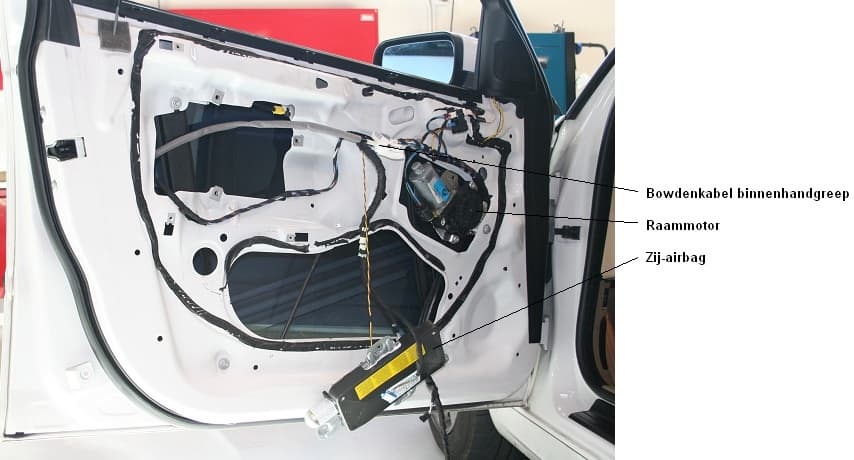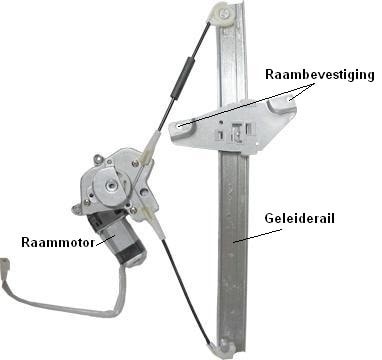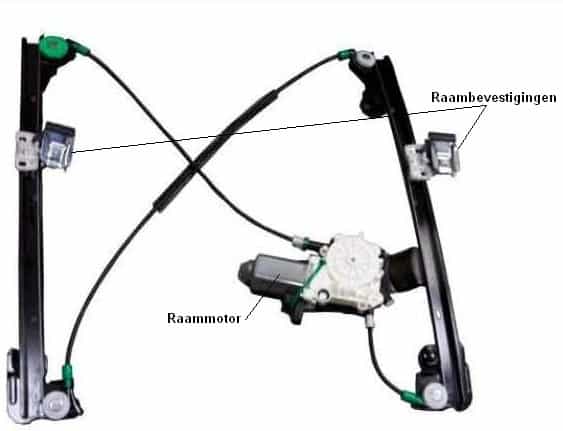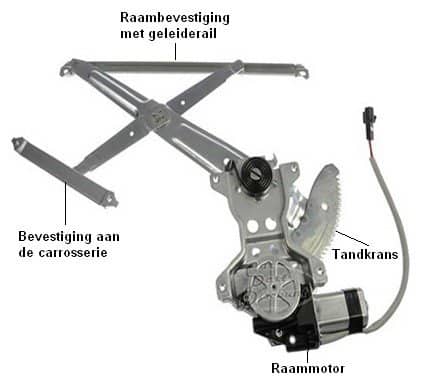Subjects:
- Window mechanism general
- Types of window mechanisms
Window mechanism general:
The window mechanism is mounted in the doors of the car. The mechanism ensures the correct opening and closing of the door windows.
The electrical and mechanical (manually operated) window mechanisms work according to the same principle. Instead of having to turn around with a crank, the shaft of the electric motor drives the mechanism.
Below is a window mechanism of a BMW 3 series. The door trim has been removed (it is mounted here with a number of screws and clips). The window mechanism itself is almost invisible. This is mounted on the inside of the door. The window is also still installed.
There is always a cover mounted on this side of the door. This cover must prevent moisture from entering the interior. Most manufacturers use foil for this. Other manufacturers use metal plates to which the mechanism is attached. The car in the picture above has foil stuck on it. The kit remains are still present here.

Types of window mechanisms:
The picture on the right shows a window mechanism with a single guide rail. The window motor pulls on the cable, causing the window mount to move up or down. This type of mechanism is often used at the rear, because there the door glass is often smaller (and lighter) than at the front (where a double guide rail is usually used.

Another version is a mechanism with a double guide rail. The cable runs crosswise. This way the window mounts can both move up or down at the same time. Also with this mechanism, the window motor drives the cable, which raises or lowers the window attachments.

The window mechanism in the picture on the right does not use cables. Here, the window motor drives a sprocket, which in turn moves up or down. The mechanism makes a shearing movement, causing the right guide in the guide rail to slide to the left and to the right. The scissoring movement will cause the door window to move up or down.

